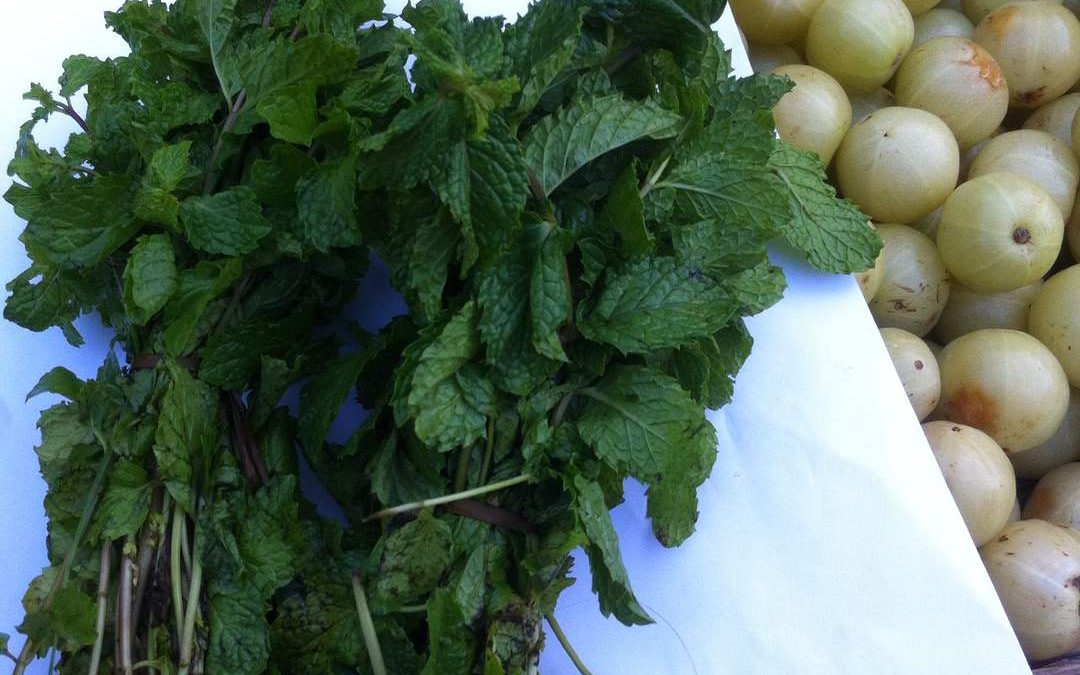Mint belongs to the Mentha genus and has dozens of species and cultivars. Hybridization between species occurs naturally. The four most commonly cultivated species are Mentha arvensis (Japanese mint, menthol); Mentha piperita (peppermint); Mentha spicata (spearmint); and Mentha citrata (bergamot). Mentha sylvestris is another wild mint that grows much larger than M. spicata. This species was used in the Middle East and Israel as a condiment and medicine.
Mint is rich in vitamins A and C. It also contains small amounts of vitamin B2 and the minerals calcium, zinc, copper, and magnesium. Spearmint oil is similar to peppermint oil but slightly sweeter and pale yellow to greenish. Dried peppermint typically has 0.3–0.4 percent volatile oil containing menthol (7–48 percent), menthone (20–46 percent), menthyl acetate (3–10 percent), menthofuran (1–17 percent), and 1,8-cineol (3–6 percent).
Peppermint oil contains small amounts of additional compounds, including limonene, pulegone, caryophyllene, and pinene. The compound carvone gives spearmint its distinctive smell. Spearmint oil contains significant amounts of limonene, dihydrochalcone, and 1, 8-cineol. Unlike peppermint oil, spearmint oil contains minimal amounts of menthol and menthone. Oil is extracted by steam distilling the flowering tops of the plant.
Tayarani-Najaran et al. (2013) indicate that the essential oils of both M. spicata and M. piperita have antiemetic effects in chemotherapy patients. Experiments with essential oil on rats indicate its antitumor properties (Hajighasemi, 2011). Studies by Kazemi, Rostami, and Shafiei (2012) suggest that M. piperita has antibacterial and antifungal activities, though less than that of M. spicata. Carvone possessed the highest antibacterial and antifungal activity among the tested components.
M. piperita is widely used in medicines to relieve digestive problems, including heartburn, nausea, vomiting, morning sickness, irritable bowel syndrome, cramps, upset stomach, diarrhea, liver and gall bladder complaints, spasms during endoscopy procedures, and as a stimulant.
Mentha spicata has a milder flavor compared to peppermint. It is used in candy, gum, teas, meats, fish, curries, salads, beverages, vinegar, jellies, and sauces, as well as in toothpaste, cosmetics, and skin-care products. Spearmint dressings are particularly popular in summer in Greece and Southern Asia.
I have just listed some of the mint’s medicinal properties above. There is much more to this herb. Mint was extensively used in Biblical times and mentioned in the Holy Bible.
My books on herbs and natural medicine:
Holy Herbs: Modern Connections to Ancient Plants
Asian herbs and their wondrous health-giving properties
Natural Solutions for Diabetes, Obesity, and Cancer (a tri-series)
Nutrition Facts- a guide to good health
